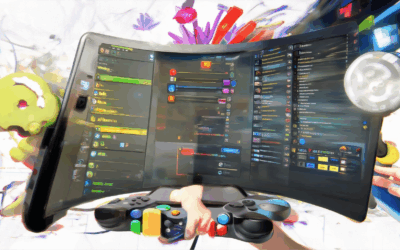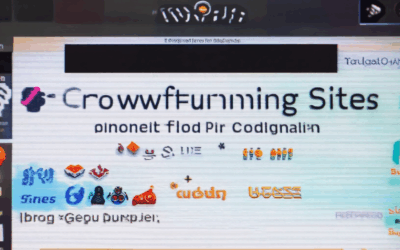For independent game developers, the quest for sustainable monetization remains a pivotal challenge in an increasingly competitive landscape. With countless options and strategies floating around, it can be overwhelming to determine the best approach for your unique project. Whether you’re a solo developer or part of a small team, finding effective indie game monetization options is crucial for ensuring your creation thrives in the market. This guide delves into proven strategies, explores diverse revenue streams, and offers insights into leveraging digital platforms and community engagement to maximize profitability. From traditional models to cutting-edge innovations, we’ll examine how to balance profit with player satisfaction, ensuring your game stands out while fostering a loyal fanbase. By addressing key questions and diving into real-world examples, this article equips you with the knowledge needed to navigate the complexities of indie game monetization and unlock long-term success.
Key Takeaways
- Establish a Robust Online Presence: Create a professional website, engage on social media, and share content consistently to effectively market your indie game.
- Engage with Gaming Communities: Join forums, participate in discussions, and collaborate with other creators to build trust and rapport.
- Leverage Video Platforms: Upload gameplay videos, stream, and consider YouTube and Twitch to reach a wider audience.
- Utilize Email Marketing: Build an email list with incentives like early access or discounts, and send regular, valuable newsletters.
- Collaborate with Creators: Partner with influencers and YouTubers for mutual promotion to expand your reach.
- Participate in Events and Conventions: Attend local or virtual events to network and showcase your game effectively.
- Employ Traditional Marketing Methods: Use flyers, posters, and design eye-catching materials to reach local audiences.
- Foster Word-of-Mouth: Share your game organically and offer incentives for referrals to encourage honest feedback.
- Implement Effective Monetization Strategies: Explore paid downloads, in-app purchases, subscriptions, ads, and affiliate programs for revenue.
- Continuously Track Progress: Use analytics tools to monitor performance and adjust marketing tactics based on data.
- Patiently Build Your Audience: Understand that marketing takes time and consistency is key to growing your player base.
- Consider Trademark Protection: Safeguard your brand with a trademark to protect your intellectual property and enhance credibility.

What is the Best Way to Monetize a Game?
We understand that successfully monetizing a game involves balancing creativity with strategic planning. Below are proven methods that can help maximize revenue while maintaining a positive player experience:
- In-App Purchases (IAP): Offer players optional purchases within the game, such as virtual currency, power-ups, or exclusive content. This approach works well for games with a large, engaged audience.
- Premium Paid Downloads: Provide a high-quality, ad-free version of your game as a one-time purchase option for dedicated fans.
- In-Game Advertising: Integrate banner ads or video ads into non-playable areas of the game to generate revenue without disrupting gameplay.
- Ongoing Mobile Game Subscriptions: Charge a recurring fee for access to premium features, content updates, or exclusive rewards.
- Sponsorships and Partnerships: Partner with brands to integrate advertisements or sponsored content into your game, ensuring it aligns with your audience’s interests.
- Blended Monetization Strategies: Combine multiple methods to cater to different player preferences and maximize revenue potential. For example, use IAP for casual players and subscriptions for hardcore fans.
To succeed, consider these tips:
- Know Your Audience: Tailor monetization strategies to your target demographic to ensure they feel valued and not exploited.
- Ad Placement: Use careful placement for ads to maintain immersion and avoid frustrating your players.
- Fair Pricing: Set prices competitively to reflect the value players receive, whether through content or gameplay enhancements.
- Regular Updates: Keep your game fresh with new content, features, and events to encourage continued engagement and spending.
By thoughtfully implementing these strategies, you can create a sustainable revenue stream while delivering an enjoyable experience for your players. Remember, the goal is to enhance your game while respecting your audience’s expectations.
How Much Money Can You Make Off an Indie Game?
Indie game developers can potentially earn varying amounts depending on several factors:
- Average Earnings: Many indie games generate between $10,000 to $50,000 monthly, though this can vary widely.
- High-Earning Exceptions: Successful indie games, particularly those that gain significant popularity or critical acclaim, can exceed $100,000 monthly. Titles like “Undertale,” which earned over $50 million, exemplify this potential.
- Revenue Streams: Income can come from sales on platforms like Steam, console releases, mobile apps, and DLCs. Mobile games may also generate revenue through ads and in-app purchases.
- Platforms and Genres: PC games on Steam often perform well, while console releases and mobile games offer additional opportunities. Strategy and puzzle genres may yield higher profits due to lower production costs compared to AAA titles.
- Monetization Methods: Techniques like paywalls, DLCs, crowdfunding, affiliate marketing, and sponsorships can supplement income.
- Factors Influencing Success: Genre appeal, marketing effectiveness, target audience, and production costs significantly impact earnings.
For more insights and resources on maximizing indie game success, visit our resources section .

Most Common Monetization Models for Digital Games
Monetization models for digital games vary widely depending on the type of game, platform, and developer goals. Here are the most common approaches:
- Advertising: Advertising is one of the most prevalent methods, particularly in mobile and casual games. Developers integrate ads into games to generate revenue through impressions or clicks.
- Free-to-Play with Cosmetic Microtransactions: Many free-to-play games rely on cosmetic microtransactions, such as skins, outfits, or character accessories, sold via in-game stores.
- In-App Purchases: Games often use in-app purchases for virtual goods, power-ups, or premium content, encouraging players to spend money within the game.
- Subscription-Based Models: Some games, like Xbox Game Pass or PlayStation Plus, use subscription fees to provide access to a library of games.
- Sponsorships and Partnerships: Brands may sponsor games or in-game events, especially in competitive genres like esports, to promote products or campaigns.
Each model has its pros and cons, and many games combine multiple strategies to maximize revenue. For example, a popular mobile game might use ads and offer optional in-app purchases for extra features. By leveraging these methods thoughtfully, developers can create sustainable and profitable gaming experiences.

How to Properly Market an Indie Game
To effectively market your indie game, follow these organized steps:
- Build a Strong Online Presence:
- Create a professional website with essential details, screenshots, and a trailer.
- Set up profiles on major social media platforms like Twitter, Instagram, and Facebook to connect with potential fans.
- Engage with Communities:**
- Join forums and Reddit communities dedicated to indie games to share updates and interact genuinely.
- Participate in discussions without spamming to build trust and rapport.
- Leverage Video Platforms:**
- Upload gameplay videos, developer diaries, and Q&A sessions on YouTube and Twitch.
- Consider streaming to showcase your game and connect with viewers.
- Utilize Email Marketing:**
- Build an email list by offering exclusive perks like early game access or discounts in exchange for emails.
- Send regular newsletters with updates, behind-the-scenes content, and special offers.
- Collaborate with Creators:**
- Reach out to YouTubers, bloggers, and influencers in the gaming niche for potential collaborations.
- Propose mutually beneficial partnerships to expand your reach.
- Participate in Events and Conventions:**
- Exhibit at local or virtual gaming events to gain visibility and network with peers.
- Start with smaller events to manage costs and time effectively.
- Apply Traditional Marketing Methods:**
- Distribute flyers and posters in strategic locations like cafes and game stores.
- Design eye-catching materials using free tools or professional services.
- Encourage Word-of-Mouth:**
- Share your game with friends and family, asking them to spread the word organically.
- Offer incentives like free game copies in exchange for honest feedback and referrals.
- Monetize Effectively:**
- Sell ad space on your website and YouTube channel carefully to maintain a positive user experience.
- Explore affiliate marketing opportunities by promoting related products.
- Track Progress and Adjust Strategies:**
- Use analytics tools like Google Analytics to monitor website and social media performance.
- Adjust marketing tactics based on feedback and engagement data.
- Patiently Build Your Audience:**
- Understand that marketing takes time and consistency is key.
- Refine your approach regularly based on learning and growth.
How to Monetize Indie Games
Monetizing indie games can be a challenging yet rewarding endeavor. Here are some proven strategies to help you maximize revenue while maintaining a loyal player base:
- 1. Paid Downloads Offer your game as a paid download through platforms like Steam, itch.io, or your own website. This model allows players to purchase the game once, providing a steady income source. Consider offering bonuses or exclusive content for early purchasers to incentivize purchases.
- 2. In-App Purchases If your game has microtransactions or cosmetic items, you can monetize through in-app purchases. Examples include virtual goods, skins, or power-ups. Ensure these are optional and don’t disrupt gameplay to maintain player trust.
- 3. Subscription Models Provide access to premium features or exclusive content through a subscription model. Platforms like Apple Arcade or Humble Bundle support this approach, allowing players to pay monthly for additional benefits.
- 4. Advertisements Incorporate subtle advertisements or sponsorships within your game. This can be done through banner ads, video ads, or sponsored levels. Keep ads non-intrusive to preserve a positive player experience.
- 5. Cross-Promotions Partner with other indie developers to cross-promote each other’s games. This could involve featuring each other’s games in promotional emails, social media, or within the game itself.
- 6. Crowdfunding Engage your fanbase through crowdfunding platforms like Kickstarter or Indiegogo. Pre-release access, exclusive rewards, and updates can motivate fans to contribute financially.
- 7. Affiliate Programs Earn commissions by promoting third-party products or services within your game. Ensure these promotions align with your game’s theme and provide value to players.
- 8. Virtual Goods Sell digital items such as character skins, weapons, or collectibles within your game. These items can be purchased through your game’s store or platform of choice.
- 9. Sponsorships Partner with brands or companies for in-game ads, product placements, or sponsor events. This requires careful selection to maintain authenticity and avoid overwhelming players.
- 10. Freelancing Offer freelance services to other indie developers, such as art, music, or programming assistance. This can provide additional income while supporting fellow creators.
By combining these strategies, you can create multiple revenue streams while fostering a strong connection with your player community. Remember to always prioritize player experience and fairness in monetization practices to maintain trust and loyalty.

Do I Need to Trademark My Indie Game?
Yes, trademarking your indie game is highly recommended to protect your creative work and establish legal rights. Here’s a breakdown of the key considerations:
Why Trademarking is Essential
- Protects Your Brand: A trademark safeguards your game’s name, logo, and other branding elements, preventing others from using identical or confusingly similar marks.
- Prevents Infringement: It deters potential copycats and provides a strong basis for legal action if your IP is violated.
- Builds Credibility: Having a registered trademark enhances your brand’s legitimacy and professionalism in the eyes of consumers and partners.
Considerations Before Trademarking
- Cost and Time: The expense varies by country, but many offer streamlined online processes. Processing times can range from a few weeks to several months.
- Enforcement: While it’s costly to enforce, a trademark provides a stronger legal position if disputes arise.
- Ongoing Maintenance: Renewals are required periodically, though this is manageable with proper planning.
Alternatives and Trade-offs
- While a trademark doesn’t protect gameplay mechanics, it’s crucial for branding and legal protection of your name and visuals.
- Consult Legal Advice: Work with an attorney to navigate complexities and ensure compliance with local laws.
Conclusion
Trademarking your indie game is a strategic move that balances legal protection with brand integrity. It’s a worthwhile investment for safeguarding your creative efforts and fostering trust among your audience.




0 Comments